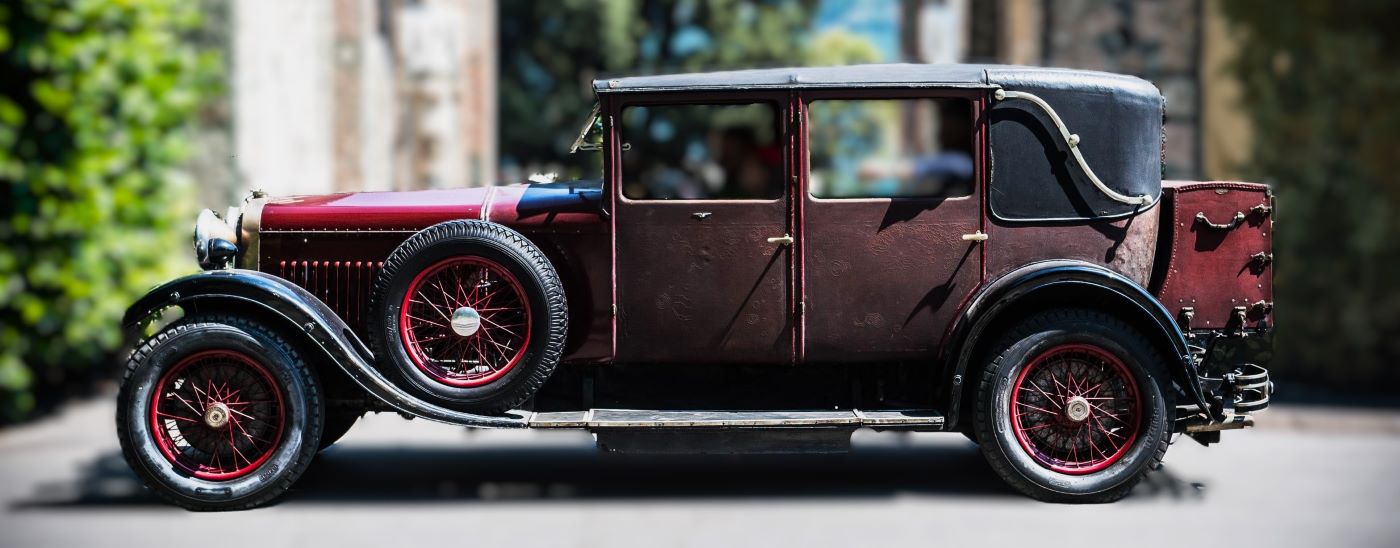
The Hispano-Suiza T49 ‘Weymann’ Sport Saloon is a particularly noteworthy variant of the T49 model, showcasing both advanced engineering and luxurious design. This version is distinguished by its “Weymann” body construction, which was an innovative method of building car bodies in the 1920s and 1930s.
The 1927 Hispano-Suiza T49 ‘Weymann’ Sport Saloon by H.J. Mulliner is a particularly special example of Hispano-Suiza’s luxurious craftsmanship, combined with innovative body construction by Weymann and the bespoke design work of H.J. Mulliner.
H.J. Mulliner, one of the most respected coachbuilders in the UK, was known for creating bespoke and elegant bodies for luxury cars. The collaboration with Hispano-Suiza on the T49 resulted in a Sport Saloon that was both refined and sporty, with meticulous attention to detail. The car featured a sophisticated design with clean lines, a long bonnet, and a spacious, well-appointed interior, reflecting the luxury standards of the era.
Weymann Body Construction
The Weymann body was a lightweight construction method developed by Charles Weymann, a French aviation pioneer. Instead of using the traditional metal skin over a wooden frame, the Weymann system used a flexible structure with fabric covering. This reduced weight and eliminated the creaking noises typical of wooden bodies. The fabric was typically stretched over a wooden frame, which was reinforced with leather joints to allow flexibility and prevent rattling.
The T49 ‘Weymann’ Sport Saloon combined the advanced Weymann construction with Hispano-Suiza’s elegant and luxurious design language. The result was a sleek, sophisticated saloon with a sporty edge. The car featured a long, graceful hood, a spacious and refined interior, and the iconic Hispano-Suiza grille with the stork mascot, symbolizing the brand’s aviation heritage.
The T49 was powered by a 6-cylinder, 4.9-liter engine, delivering smooth and reliable performance. This engine was known for its durability and was capable of propelling the car to impressive speeds for its time. The top speed of the Hispano-Suiza T49 ‘Weymann’ Sport Saloon was approximately 85 to 90 mph (137 to 145 km/h). The lightweight Weymann body further enhanced the car’s performance by reducing the overall weight, leading to better acceleration and handling.
Inside, the T49 ‘Weymann’ Sport Saloon was designed to provide maximum comfort for its passengers. High-quality materials, fine craftsmanship, and attention to detail were hallmarks of the interior, making it a luxurious space to travel in.
The Hispano-Suiza T49 ‘Weymann’ Sport Saloon is a rare and highly prized classic car today. It represents a blend of innovative engineering and high-end luxury, which made Hispano-Suiza one of the most respected names in the automotive world during the early 20th century. The Weymann body adds a layer of historical and technical interest, as it was a significant departure from the traditional methods of car construction at the time. This model is particularly valued by collectors for its rarity, historical importance, and the elegance of its design, making it a true icon of automotive history.
Hispano-Suiza T49
- Production Years: 1929-1933
The Hispano-Suiza T49 is a classic luxury car produced by the Spanish automaker Hispano-Suiza in the early 1930s. It is known for its elegance, engineering excellence, and high performance, which were hallmarks of the brand during that era. The T49 was available in various body styles, including sedans, convertibles, and coupes. The design was typically elegant, reflecting the luxury and craftsmanship associated with Hispano-Suiza. The car featured a robust and refined chassis, often used as the basis for custom coachwork by prestigious bodybuilders, making each vehicle unique.
The T49 was equipped with a 6-cylinder, 4.9-liter engine, delivering impressive power for the time. With its advanced engineering, the T49 offered excellent performance, including a top speed that was competitive for luxury cars of the period.

You must be logged in to post a comment.